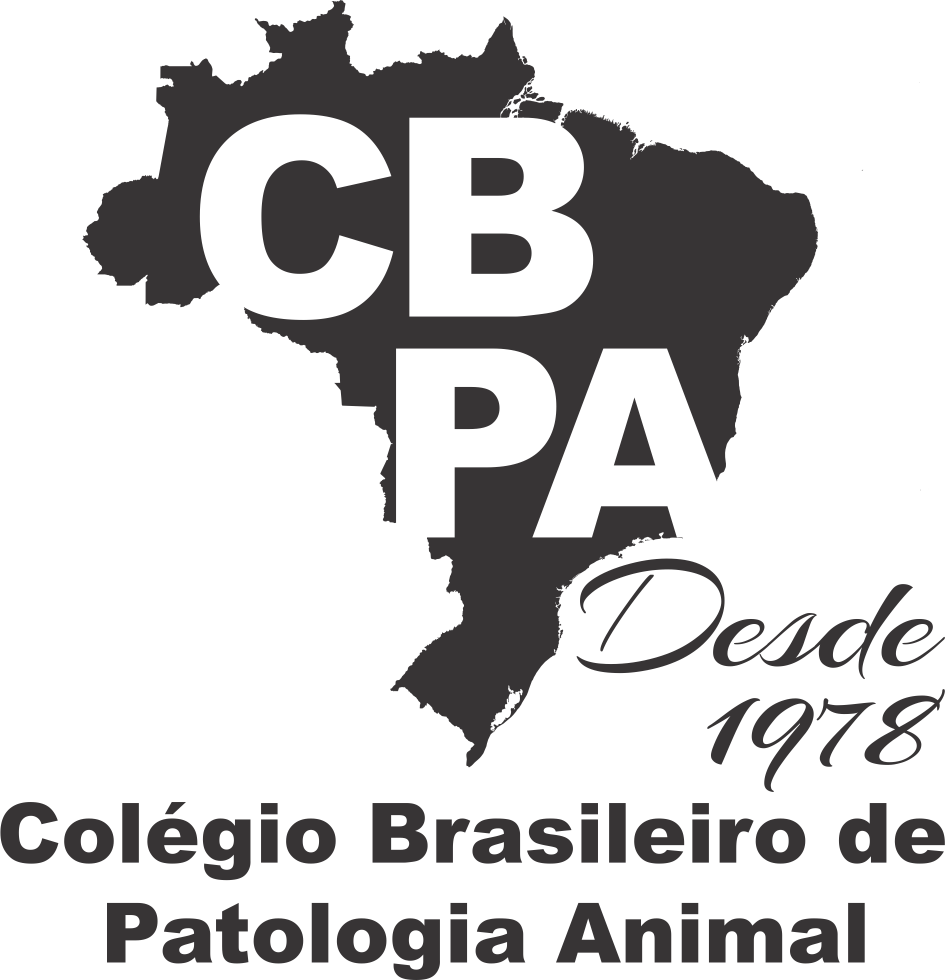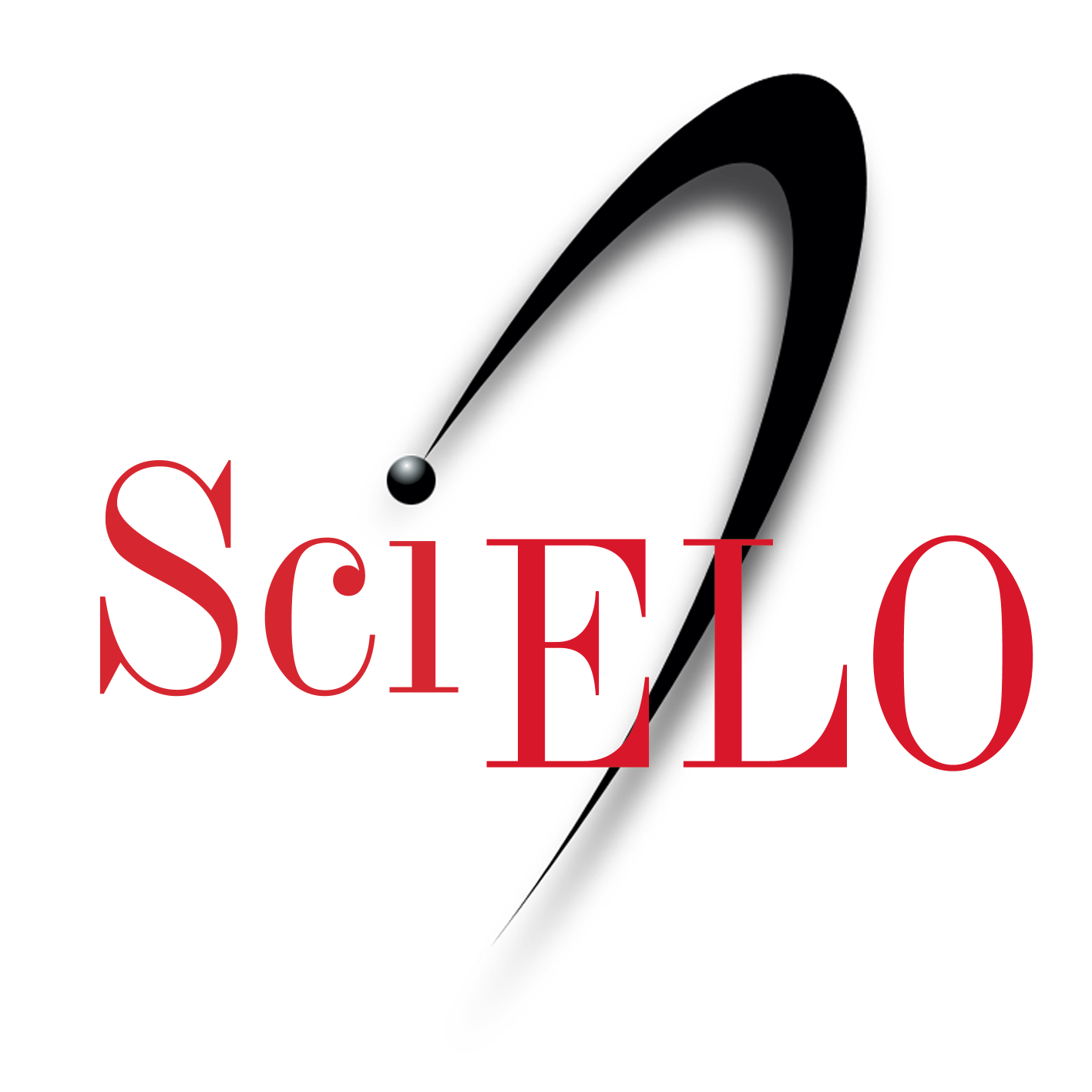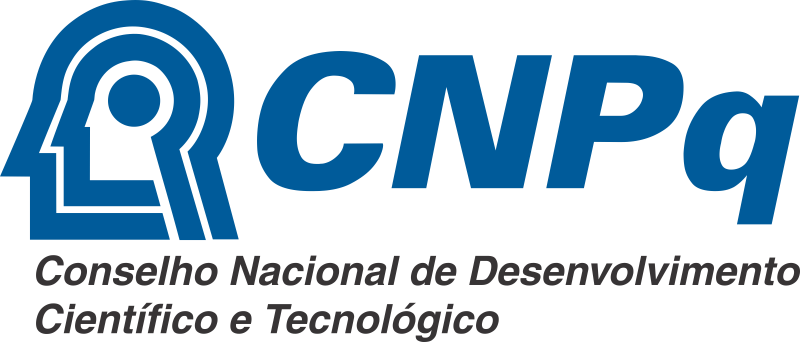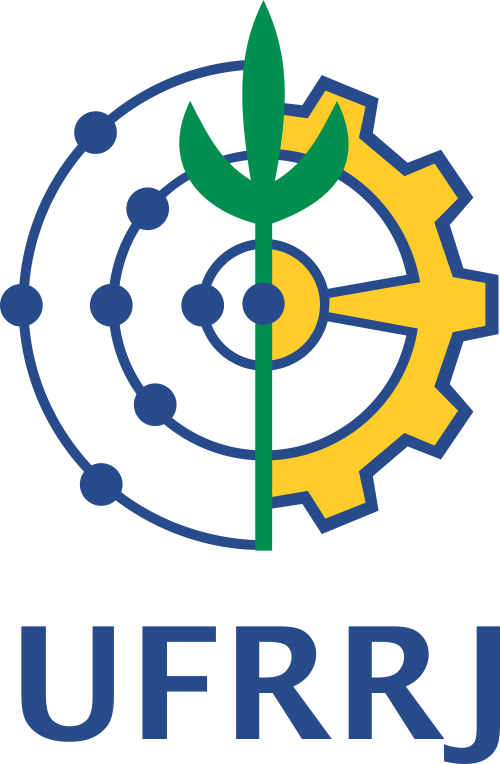Resultado da pesquisa (4)
Termo utilizado na pesquisa bezerros da raça holandesa
#1 - Ultrassonographic avaliation of the inflamed umbilical structures in Holstein calves during their first 30 days of life, 36(6):492-502
Abstract in English:
ABSTRACT.- Seino C.H., Bombardelli J.A., Reis G.A., Santos R.B., Shecaira C.L., Azedo M.R. & Benesi F.J. 2016. [Ultrassonographic avaliation of the inflamed umbilical structures in Holstein calves during their first 30 days of life.] Avaliação ultrassonográfica de componentes umbilicais inflamados em bezerros da raça Holandesa com até 30 dias de vida. Pesquisa Veterinária Brasileira 36(6):492-502. Departamento de Clínica Médica. Faculdade de Medicina Veterinária e Zootecnia, Universidade de São Paulo, Av. Prof. Dr. Orlando Marques de Paiva 87, São Paulo, SP 05508-270, Brazil. E-mail: caroline.seino@gmail.com
Umbilical disorders deserve mention among the illnesses affecting calves in the first month of life. The high incidence during this phase of life of newborns and relevant economic losses arising from mortality, cost of treatment and veterinary care, beyond sequelae may determine lower weight gain and milk production. The diagnosis of these diseases is often hampered by the difficulty to detect the involvement of intra-abdominal umbilical structures, which negatively affect the choice of the most appropriate treatment and the actual outcome for each calf. In the present study, we performed ultrasound examinations of calves with inflammation/infection in the umbilical components and observed some characteristics related with measurements and echogenicity present in umbilical affected components. From these evaluation it was concluded that the wall thickness of the umbilical vessels is the more reliable standard to determine changes in these components, as compared with that of the diameter of the umbilical vessels. Furthermore, from this study we observed some peculiarities of involution of the intra-abdominal umbilical cord components in healthy Holstein calves used for the control group to characterize the behavior of the umbilical structures during the progress of the age in the newborns. It is noteworthy that the comparison of these results with those found in the rare literature available showed notable differences.
Abstract in Portuguese:
RESUMO.- Seino C.H., Bombardelli J.A., Reis G.A., Santos R.B., Shecaira C.L., Azedo M.R. & Benesi F.J. 2016. [Ultrassonographic avaliation of the inflamed umbilical structures in Holstein calves during their first 30 days of life.] Avaliação ultrassonográfica de componentes umbilicais inflamados em bezerros da raça Holandesa com até 30 dias de vida. Pesquisa Veterinária Brasileira 36(6):492-502. Departamento de Clínica Médica. Faculdade de Medicina Veterinária e Zootecnia, Universidade de São Paulo, Av. Prof. Dr. Orlando Marques de Paiva 87, São Paulo, SP 05508-270, Brazil. E-mail: caroline.seino@gmail.com
As afecções umbilicais merecem destaque entre as enfermidades que acometem bezerros no primeiro mês de vida, pela alta incidência durante essa fase da vida dos neonatos e pelas relevantes perdas econômicas, decorrentes da mortalidade, custos de tratamento e atendimento veterinário, além de sequelas que poderão determinar menores ganho de peso e produção leiteira. O diagnóstico dessas enfermidades muitas vezes é prejudicado pela dificuldade em se detectar os acometimentos das estruturas intra-abdominais do umbigo, o que afetará negativamente a escolha do tratamento mais adequado e o estabelecimento do real prognóstico para cada animal. No presente estudo, realizou-se a análise ultrassonográfica dos animais com inflamação/infecção dos componentes umbilicais sendo possível observar algumas características em relação a mensurações e ecogenicidade, presentes nos componentes umbilicais acometidos. A partir dessas avaliações concluiu-se que a medida mais adequada para identificar animais com possíveis processos inflamatórios nos componentes umbilicais é a espessura da parede dos vasos umbilicais quando comparada ao diâmetro dos mesmos. Ainda, o estudo possibilitou verificar algumas particularidades do comportamento dos componentes do cordão umbilical em bezerros sadios da raça Holandesa, bem como determinar que os vasos umbilicais intra-abdominais iniciam uma involução em porção mais interna e progridem para as extremidades próximas ao anel umbilical com o evoluir da idade. Destaca-se que o confronto desses resultados com aqueles poucos descritos na literatura disponível mostrou-se com notáveis diferenças.
#2 - Effects of the stress of orchectomy on bronchoalveolar citology of Holstein Calves, 33(Supl.1):93-98
Abstract in English:
ABSTRACT.- Bellinazzi J.B., Bertagnon H.G., Batista C.F., Santos B.P., Lima M.G.B., Lima D.M., Benesi F.J. & Della Libera A.M.M. 2013. [Effects of the stress of orchectomy on bronchoalveolar citology of Holstein Calves.] Efeitos do estresse da orquiectomia na citologia broncoalveolar de bezerros da raça Holandesa. Pesquisa Veterinária Brasileira 33(Supl.1):93-98. Departamento de Clínica Médica, Faculdade de Medicina Veterinária e Zootecnia, Universidade de São Paulo, Av. Prof. Dr. Orlando Marques de Paiva 87, São Paulo, SP 05508-270, Brazil. E-mail: dellalibera@usp.br
The recognition of the impact of certains forms of stress in the animal well being and organic equilibrium, represents a challenge to the adoption of good practices. Thus, this research verified the impact of a painful rotine of the cattle husbandry can cause on pulmonary and systemic immunity. Was evaluated hemogram and cortisol, in four moments, being M1, M6, M7 e M8 (respectively seven days before and one, three and eight days after the painful challenge) and bronchoalveolar cytology,obtained by bronchoscopy, in the moments of M1, M6 e M8. There was a reduction of the erythrogram values in the first day after the challenge, compatible with the anaplasmosis and aggravated by the blood loss during the surgery and an influx of leukocytes to the pulmonary region. Eight days after the challenge, became evident the cortisol increase, enerating leukocytosis by neutrophilia and monocytosis in the blood with a probable reduction of chemotaxis to the lungs, turning the respiratory tract potentially more susceptible to infections, suggesting that this practice, even accompanied by analgesic protocol, increases the risk of pneumonia, affecting the animal well-being.
Abstract in Portuguese:
RESUMO.- Bellinazzi J.B., Bertagnon H.G., Batista C.F., Santos B.P., Lima M.G.B., Lima D.M., Benesi F.J. & Della Libera A.M.M. 2013. [Effects of the stress of orchectomy on bronchoalveolar citology of Holstein Calves.] Efeitos do estresse da orquiectomia na citologia broncoalveolar de bezerros da raça Holandesa. Pesquisa Veterinária Brasileira 33(Supl.1):93-98. Departamento de Clínica Médica, Faculdade de Medicina Veterinária e Zootecnia, Universidade de São Paulo, Av. Prof. Dr. Orlando Marques de Paiva 87, São Paulo, SP 05508-270, Brazil. E-mail: dellalibera@usp.br
A identificação do impacto que certas formas de estresse causam ao bem estar animal e equilíbrio orgânico, representa um desafio á adoção de boas práticas de criação. Assim, a presente pesquisa verificou o impacto de um desafio doloroso rotineiro dos bovinos na imunidade pulmonar e sistêmica. Avaliou-se hemograma e cortisol, em quatro momentos, sendo M1, M6, M7 e M8 (respectivamente sete dias antes e um, três e oito dias depois do desafio doloroso) e citologia broncolaveolar, obtida por broncoscopia, nos momentos M1, M6 e M8. Houve uma redução dos valores do eritrograma no primeiro dia após o desafio, compatível com anaplasmose e agravada pela perda de sangue durante a cirurgia e um influxo de leucócitos para a região pulmonar. Oito dias após o desafio, evidenciou-se aumento de cortisol, gerando uma leucocitose por neutrofilia e monocitose no sangue com provável redução de quimiotaxia para o pulmão, tornando o trato respiratório potencialmente mais susceptível a infecções, sugerindo que esta prática de manejo, mesmo acompanhado de protocolo analgésico, pode ser considerada um fator de risco a penumonias afetando o bem estar animal.
#3 - Avaliação ecocardiográfica em bezerros da raça Holandesa, p.481-486
Abstract in English:
ABSTRACT.- Michima L.E.S., Leal M.L.R., Bertagnon H.G., Fernandes W.R. & Benesi F.J. 2007. [Echocardiographic evaluation in Holstein calves.] Avaliação ecocardiográfica em bezerros da raça Holandesa. Pesquisa Veterinária Brasileira 27(12):481-486. Departamento de Clínica Médica, Faculdade de Medicina Veterinária e Zootecnia, Universidade de São Paulo, Av. Prof. Dr. Orlando Marques de Paiva 87, Bloco 12/14, São Paulo, SP 05508-270, Brazil. E-mail: lilianm@usp.br
With the purpose of establishing echocardiographic measurements in Holstein calves, 25 calves, 8 to 28 days of age and body weight ranging from 27 to 57 kg, were used. The echocardiographic examination was proceeded in B and M-modes to obtain the following parameters, in diastole and systole: right ventricle (2.05±0.13cm and 1.59±0.13cm) and left ventricle internal diameter (3.91±0.09cm and 2.52±0.13cm), and interventricular septum (1.24±0.04cm and 1.62±0.06cm) and left ventricle free wall thickness (0.92±0.04cm and 1.50±0.05cm). The values for both left and right atria in systole were 2.97±0.12cm and 4.110.21cm, respectively. The left diastolic (67.90±3.65ml), systolic (25.32±3.05ml) and ejection (42.58±2.46ml) volumes, cardiac output (3857±339ml/min), aortic root diameter (2.52±0.05cm), E-point septal separation (0.65±0.08cm), left ventricle ejection time (0.39±0.02s), fractional shortening (36.27±2.40%) and ejection fraction (64.67±3.22%) were also calculated. There was a mean positive linear correlation (66.4%, P<0.01) between the aortic root diameter and the bodyweight, mean negative linear correlation (P<0.01) heart rate (69.1%) and cardiac output (62.4%). There was a tendency of the calves in between the left ventricle ejection time and presenting a smaller left chamber diameter, although maintained the relationship between myocardial wall thickness and functional indexes.
Abstract in Portuguese:
ABSTRACT.- Michima L.E.S., Leal M.L.R., Bertagnon H.G., Fernandes W.R. & Benesi F.J. 2007. [Echocardiographic evaluation in Holstein calves.] Avaliação ecocardiográfica em bezerros da raça Holandesa. Pesquisa Veterinária Brasileira 27(12):481-486. Departamento de Clínica Médica, Faculdade de Medicina Veterinária e Zootecnia, Universidade de São Paulo, Av. Prof. Dr. Orlando Marques de Paiva 87, Bloco 12/14, São Paulo, SP 05508-270, Brazil. E-mail: lilianm@usp.br
With the purpose of establishing echocardiographic measurements in Holstein calves, 25 calves, 8 to 28 days of age and body weight ranging from 27 to 57 kg, were used. The echocardiographic examination was proceeded in B and M-modes to obtain the following parameters, in diastole and systole: right ventricle (2.05±0.13cm and 1.59±0.13cm) and left ventricle internal diameter (3.91±0.09cm and 2.52±0.13cm), and interventricular septum (1.24±0.04cm and 1.62±0.06cm) and left ventricle free wall thickness (0.92±0.04cm and 1.50±0.05cm). The values for both left and right atria in systole were 2.97±0.12cm and 4.110.21cm, respectively. The left diastolic (67.90±3.65ml), systolic (25.32±3.05ml) and ejection (42.58±2.46ml) volumes, cardiac output (3857±339ml/min), aortic root diameter (2.52±0.05cm), E-point septal separation (0.65±0.08cm), left ventricle ejection time (0.39±0.02s), fractional shortening (36.27±2.40%) and ejection fraction (64.67±3.22%) were also calculated. There was a mean positive linear correlation (66.4%, P<0.01) between the aortic root diameter and the bodyweight, mean negative linear correlation (P<0.01) heart rate (69.1%) and cardiac output (62.4%). There was a tendency of the calves in between the left ventricle ejection time and presenting a smaller left chamber diameter, although maintained the relationship between myocardial wall thickness and functional indexes.
#4 - Occurrence of inherited parakeratosis (lethal trait A-46) in Brazil)
Abstract in English:
Evidence of the existence of inherited parakeratosis (lethal trait A-46) in Holstein calves in southeastern Brazil is presented. Affected animals were normal at birth and about 2 months later showed alopecia and crusts around the muzzle, eyes and ears, at the limbs, axillae and dorsal cervical region. Some calves showed salivation, diarrhoea and signs of pneumonia. Two animals were treated with either zinc sulphate or zinc oxide and their condition improved after one week. Total recovery occurred after 7 weeks treatment. Suspension of zinc administration caused recurrence of the clinical signs and the lesions. Analysis of zinc in blood serum and hair revealed very low levels in untreated calves and normal levels in the calves treated with zinc. Post-mortem examination revealed lesions of the esophagus, epiglottis and glottis besides the ones at the skin. Two necropsied calves had bronchopneumonia and one of them, in which this alteration was searched for, showed pronounced thymus atrophy. Histologically the skin showed parakeratosis, hyperkaratosis end acanthosis. The final diagnosis was based on epidemiological, clinical, gross and microscopic data together with the low serum zinc levels, according to the description of inherited parakeratosis. The detection of the disease is particularly significant because of the high risk of its spreading throμgh the trade of carrier animals or semen from carrier bulis.
Abstract in Portuguese:
São apresentadas evidências cfu presença de paraqueratose heréditária (linhagem letal A-46) em bezerros da raça holandesa no Brasil. Na Região Sudeste, a partir de 1973 começaram a aparecer casos de bezerros que, em meio às mesmas condições alimentares e de manejo dos bezerros não afetados, apresentavam lesões de pele progressivas e sempre morriam dentro de poucas semanas, independentemente do tipo de tratamento instituído. Os animais afetados eram normais ao nascer e em torno dos 2 meses de idade desenvolviam alopecia, formação de crostas em torno do focinho, olhos, base das orelhas, extremidades, axilas e região cervical dorsal. Em parte dos casos observaram-se sialorréia, diarréia e sinais de broncopneumonia. Dois animais foram tratados com sulfato ou óxido de zinco e evidenciaram melhoras a partir de uma semana, com recuperação total ao cabo de 7 semanas. Com a suspensão das adminis- trações de zinco, os sintomas e lesões recrudesceram. A dosagem dos teores de zinco no soro sangüíneo e pêlo mostraram concentrações muito baixas antes dos animais serem tratados e teores normais depois de iniciado o tratamento. À necropsia, além das lesões de pele, observaram-se, em um animal, úlceras recobertas de fibrina na mucosa oral e em outro, também na epiglote, glote e esôfago; dois animais necropsiados apresentaram broncopneumonia e um deles, no qual se atentou para essa alteração, acentuada atrofia do timo. Ao exame histológico da pele havia paraqueratose hiperqueratótica e acantose. O diagnóstico baseou-se nos dados epidemiológicos, clínicos, anátomo e histopatológicos e nas análises de zinco no soro, que estão de acordo com os descritos na literatura para a paraqueratose hereditária. A constatação da presença dessa enfermidade tem seu principal significado no risco de disseminação através da venda de sêmen ou de animais portadores, o que infelizmente já vem ocorrendo na Região Sudeste do Brasil.









